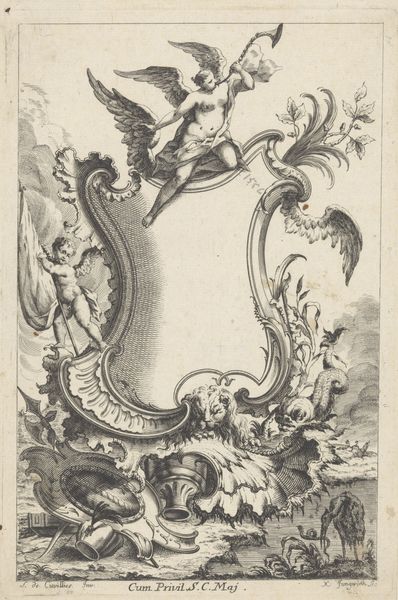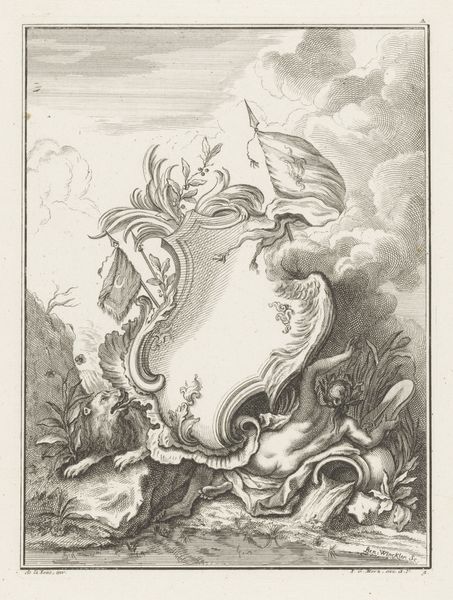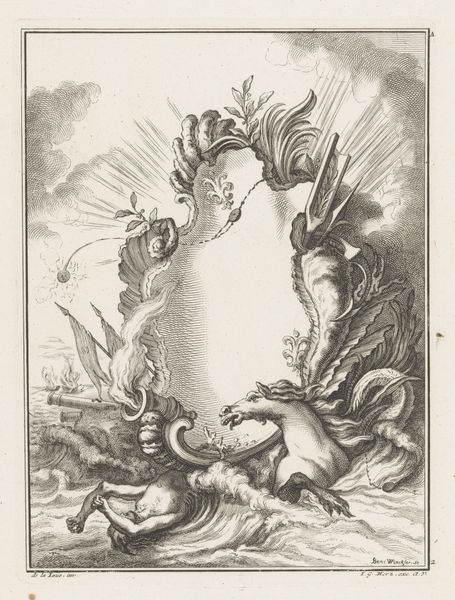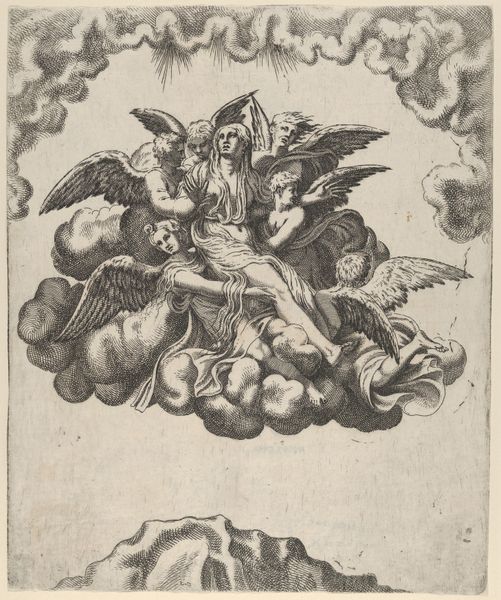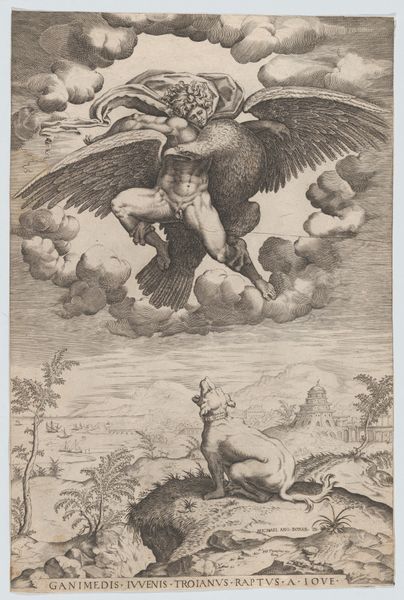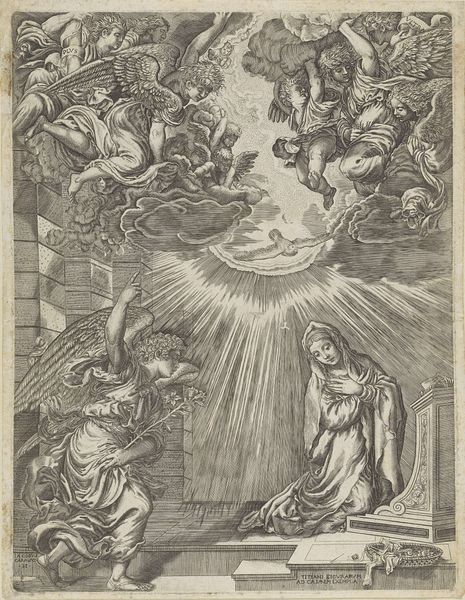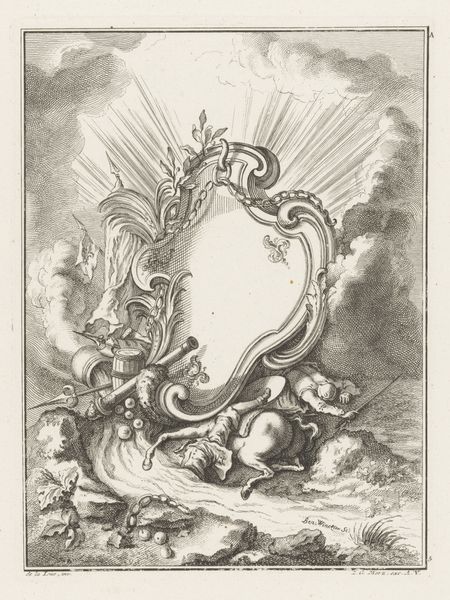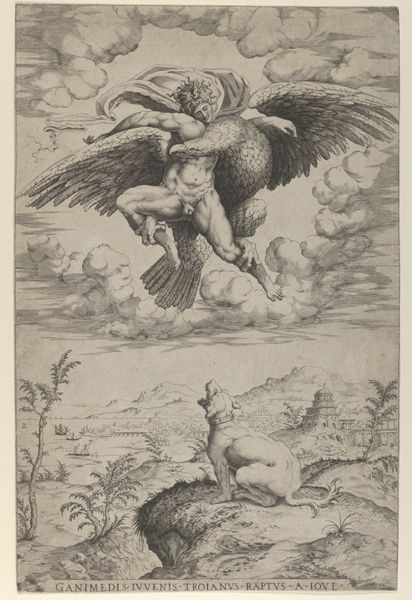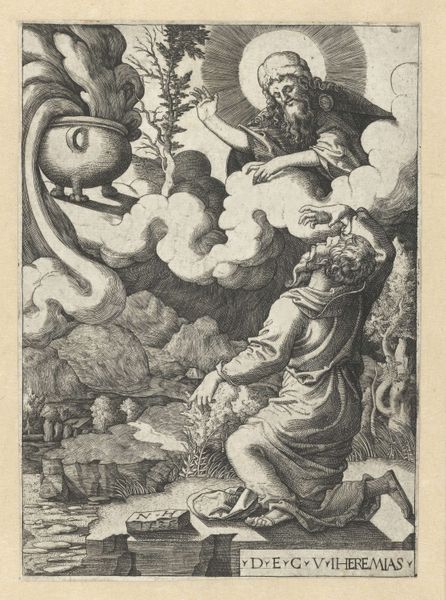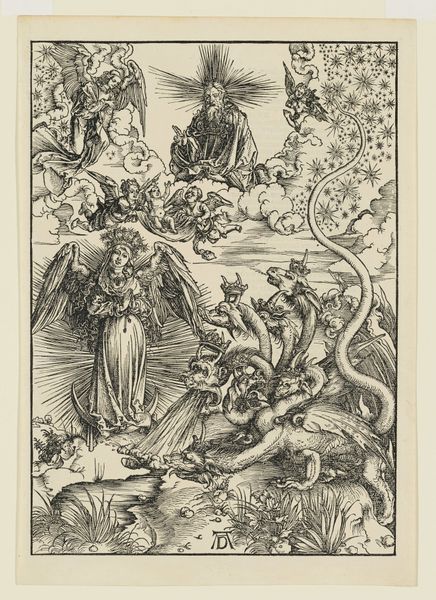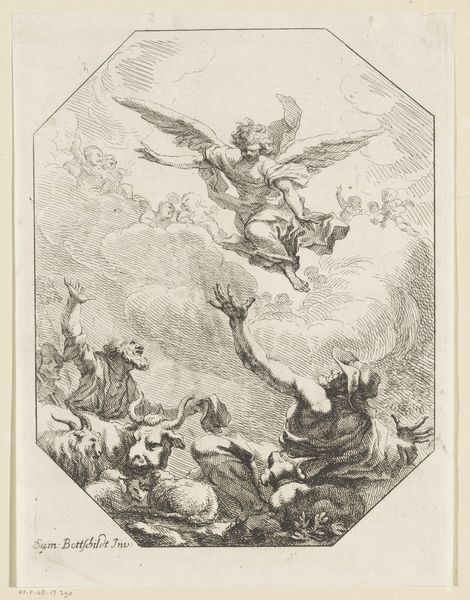
print, engraving
#
allegory
#
baroque
# print
#
history-painting
#
engraving
Dimensions: height 220 mm, width 148 mm
Copyright: Rijks Museum: Open Domain
Curator: Look at this dramatic piece, likely an engraving from around 1670. It's titled "Adelaar en slang," or "Eagle and Serpent," currently held at the Rijksmuseum. Editor: My initial feeling? It's a baroque showdown! The eagle looks majestic, pinning down this serpentine beast with a snarl that seems to echo centuries of conflict. It’s charged with emotion! Curator: Yes, you feel that drama right away! It's allegorical. The eagle likely symbolizes virtue or perhaps even divine authority, crushing the serpent, a classic symbol of evil or temptation. And, consider its production; the intricate details achieved through engraving is masterful, allowing such rich contrasts of light and dark. Editor: Exactly, I love how the artist used contrasting values. That blinding light behind the eagle seems almost celestial, adding weight to its purpose while that fierce-looking serpent writhes on the ground; I feel the struggle! And there's a little cherubic figure with a banner overhead too. Can you tell me about that? Curator: Ah yes, it adds another layer. That winged child is carrying a banner, its Latin inscription "Sterni/humi foedos hostes, & celia nitetur," means, "The foul enemies are thrown down, and heaven will shine." It's basically a pronouncement of the victory of good over evil, reflecting the religious climate and Baroque sensibilities of the period. The engraving’s grand title references a true history: that of the Council of Trent, too. Editor: That puts it in a historical context that suddenly snaps the artwork into place! The light and dark values become more potent metaphors, the tension becomes focused... Curator: Precisely! Editor: Well, looking at the print now, I sense this is a powerful visualization of dogma in times of intense belief, like an affirmation. The struggle of an enlightened eagle that triumphs over blind, earthbound hostility… a picture worth a thousand words. Curator: Indeed! The artist leaves us to ponder the endurance and impact of institutional histories that are still so evocative.
Comments
No comments
Be the first to comment and join the conversation on the ultimate creative platform.
